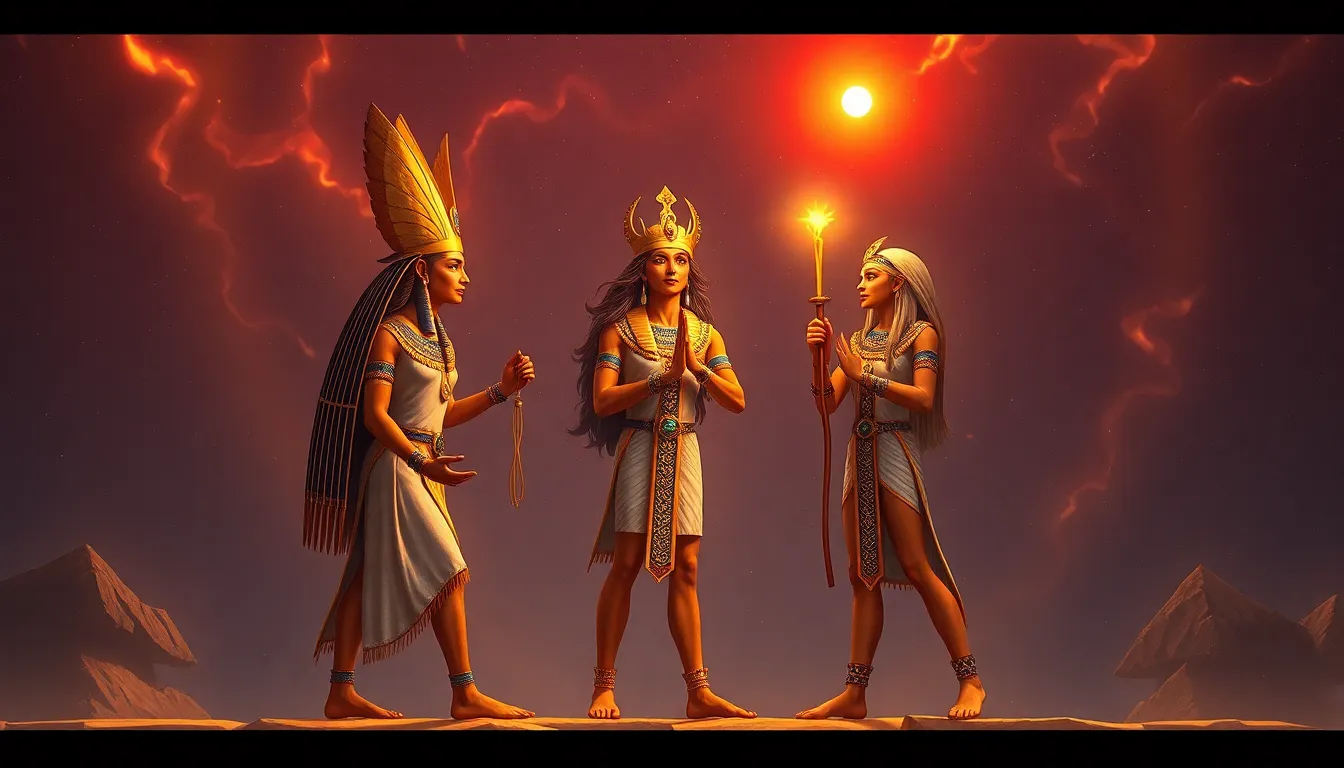The Worship of Hathor: Goddess of Love and Joy
I. Introduction
Hathor, one of the most significant deities in ancient Egyptian mythology, embodies the essence of love, joy, and motherhood. Known as the ‘Mistress of the West,’ she played a multifaceted role in the lives of the ancient Egyptians, influencing not only personal relationships but also the broader cultural landscape. Her duality as both a goddess of love and joy illustrates the intricate balance of life and the human experience in ancient Egypt.
This article aims to explore the significance of Hathor, her historical context, symbols and attributes, rituals, and her lasting influence in modern culture.
II. Historical Context of Hathor’s Worship
The worship of Hathor can be traced back to the earliest periods of ancient Egyptian religion. Initially, she was associated with the sky and the sun, evolving into a complex goddess of fertility, music, and love. Her origins are often linked to the myths surrounding the sun god Ra and the cow goddess, suggesting a deep-seated connection to both nature and divinity.
Key historical periods of her veneration include:
- Old Kingdom: Hathor was revered as a protective goddess, especially in funerary contexts and as a nurturing mother.
- Middle Kingdom: Her role expanded, and she became closely associated with the royal family and the concept of divine motherhood.
- New Kingdom: Hathor’s worship reached its zenith, with temples dedicated to her across Egypt, particularly at Dendera, where she was celebrated as a central figure in the pantheon.
Hathor’s influence extended beyond the boundaries of major cities, as she was worshipped in various regions, each adapting her attributes to local customs and beliefs.
III. Symbols and Attributes of Hathor
Hathor is represented through a rich array of symbols and attributes that signify her diverse aspects:
- Cow: Often depicted as a cow or with cow horns, symbolizing her nurturing and maternal qualities.
- Sistrum: A musical instrument associated with her, representing joy and celebration.
- Sun Disk: Frequently shown with a sun disk encircled by cow horns, indicating her connection to the sun and her role as a protector.
In art and sculpture, Hathor is portrayed in various forms, often adorned with jewelry and lush garments, emphasizing her beauty and grace. These representations were not only artistic but also served as objects of worship, connecting the faithful to the divine.
IV. Rituals and Practices in Hathor Worship
Rituals dedicated to Hathor were elaborate and multifaceted, reflecting her importance in the spiritual lives of the ancient Egyptians:
- Sacred Rituals: Temples dedicated to Hathor were centers of worship where priests performed daily rituals to honor her, including offerings of food, music, and dance.
- Festivals: The Feast of Hathor, celebrated annually, involved music, feasting, and processions that brought communities together in joyous celebration.
- Music and Dance: Integral to her worship, music and dance were seen as acts of devotion, with the sistrum played to invoke her presence and favor.
V. Hathor’s Role in Love and Relationships
Hathor’s associations with love and sexuality made her a pivotal figure in matters of the heart:
- Romantic Love: She was often invoked by lovers seeking her blessings for their romances, embodying the ideal of passionate love.
- Marriage and Fertility: Couples would pray to Hathor for fertility and harmonious marriages, as she was considered a protector of family life.
- Rituals for Love: Various amulets and charms associated with Hathor were used to attract love and ensure marital bliss.
VI. Hathor’s Connection to Joy and Celebration
Joy held a significant place in ancient Egyptian culture, and Hathor was its personification:
- Concept of Joy: Joy was not merely an emotion but a vital aspect of life that the ancient Egyptians celebrated through festivals and rituals.
- Festivals: Hathor’s festivals were vibrant occasions filled with music, dance, and communal feasting, reinforcing social bonds and cultural identity.
- Myths and Stories: Tales of Hathor often highlight her joyful nature, portraying her as a goddess who brings happiness and prosperity to her followers.
VII. Hathor in Modern Culture
The legacy of Hathor endures in contemporary culture and spirituality:
- Modern Spirituality: Hathor is embraced in various neopagan practices, often seen as a symbol of love, joy, and femininity.
- Art and Literature: Artists and writers draw inspiration from Hathor, depicting her in various forms that reflect her timeless attributes.
- Popular Culture: Her imagery and symbolism resonate in films, music, and literature, reflecting an enduring fascination with ancient Egyptian mythology.
VIII. Conclusion
Hathor remains an important figure in ancient Egyptian mythology, revered as the goddess of love and joy. Her multifaceted nature and the rituals surrounding her worship illustrate the depth of human emotion and the celebration of life in ancient Egypt. As we explore the significance of Hathor, we recognize the relevance of her attributes in today’s world, where love and joy continue to be fundamental to the human experience.
We invite you to delve deeper into the rich tapestry of ancient Egyptian deities and discover the profound impact they had on culture, spirituality, and the human spirit.




